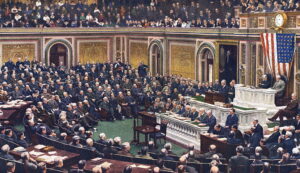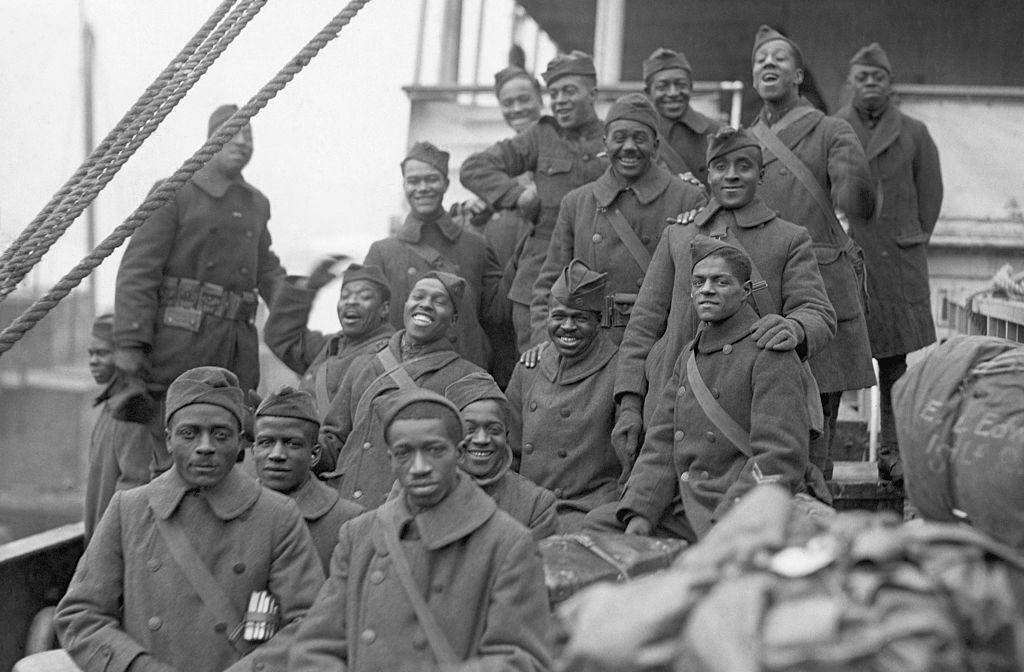Through most of my career, I worked as a futurist, a technologist and tech entrepreneur, but I joined the United States World War I Centennial Commission 10 years ago and suddenly found myself immersed in history. It was a personal shock when research into Google terms showed that WWI, arguably one of the most consequential events in American history, was of little interest to Americans — especially in contrast to current Europeans’ massive public interest in the subject.

The unprecedented global cataclysm raged from 1914 through 1918. As a nation, America was officially neutral (while supplying raw materials and financing, mostly to the allied nations) until the spring of 1917. That’s when America, which at the time had a tiny standing army smaller than Portugal’s, stood up among a world of empires to transform itself into a global military force virtually overnight. Within a short 18 months, the US put 4.7 million men and women into uniform. We equipped and shipped nearly 2 million soldiers to the battlefields of Europe and transformed our industrial, political and social foundations to decisively help to end a nightmarish global war.
WWI and its effects permeated every aspect of American life and culture, including the role of women, immigrants, African Americans, Native Americans, the Bill of Rights, our financial foundation, our technologies and — most of all — our standing on the world stage.
As I’ve discussed this with teachers over the past decade, there is clear consensus that “how WWI changed America” is a subject that has not received the focus it deserves.
Why did the first World War fade from memory?
This is a question I have asked for the past 10 years and have received wonderful answers from renowned academicians, authors, bartenders and some of my favorites from Uber drivers. I won’t insult the question with a quippy answer, but we do know this:
In the 1916 presidential incumbent Woodrow Wilson ran on the slogan “He Kept Us Out of War.” He won the election in November, was inaugurated in March and asked Congress to declare war on Germany less than a month later, which they did on April 6, 1917.
To sell the war to the American people, Wilson tapped a newspaper guy named George Creel, who had worked on his re-election campaign. Creel — very successfully — headed a federal propaganda agency designed to promote the war effort in movie theaters, churches and union halls. He created a federal government newspaper to publish all the war news the Wilson administration wanted to get out — and none that it wanted kept quiet. As Creel anticipated, commercial newspapers simply re-reported his coverage to save time and money.

Wilson appointed John “Blackjack” Pershing as the US General of the Armies. He declared that America would not offer the allies its men to Europe as cannon fodder; instead America would enter the war on its own terms, with its own command structure, and fight as an independent force — restoring mobility to warfare through American grit and marksmanship.
To this day, Woodrow Wilson is the only American president to hold a doctorate degree, and his learned perspective in political science prompted his 1918 presentation of the Wilson 14 Points that outlined a vision for creating a peace out of the WWI conundrum.
On the darker side of the coin, the Wilson administration used draconian methods to turn the American ship into the winds of WWI, including a massive draft, wartime control of industries and severe encroachments on the Bill of Rights. Neither dissent nor criticism was tolerated. If you spoke up against the war or the US government, you would very likely find yourself in jail. Wilson made a lot of enemies.
After Democrats’ Congressional midterm losses stemming from anti-Wilson sentiment, the president headed to Europe to sell his vision for a new world order at the Paris Peace Talks, but the US never ratified the Treaty of Versailles and never joined the League of Nations. Wilson’s political opponents did whatever they could to wipe out everything the Wilson administration stood for.
Is this why WWI faded from US consciousness? Maybe in part. History is complex, and there are plenty of ideas about how WWI became an overlooked era of our history. I was always impressed with what an Uber driver quipped to me on a ride to the airport when asked why this had happened: “It’s simple!” he said “WWII had Pearl Harbor, Hitler, the Atom Bomb and Tom Hanks. What did WWI have!?”
Connecting WWI with today’s world
For a few years, I hosted a history podcast where the format was to look at current events in each episode and find their roots in WWI. The war may have ended more than a century ago, but these prompts should help your students understand how we live with WWI’s consequences every day.
Conflict in the Middle East. The Middle East is top of the news these days, but the nations of the Middle East are a direct result of WWI. Prior to WWI, the Ottoman Empire ruled most of the Middle East, but siding with Germany and the Central Powers, the Ottoman Empire collapsed, and the Allies divvied up the region, telling disparate tribes and clans of nomads that they were now part of a nation. This created a quagmire of cultures within and among adjacent borders. Even a declaration for creating a “Homeland for the Jewish People in Palestine” was drafted in 1917.

Air travel. As we come up on Thanksgiving, the news is sure to be filled with stories of airport challenges, with millions of passengers casually taking to the skies. Although Orville and Wilbur Wright flew 850 feet at Kitty Hawk in late 1903, it was WWI that accelerated the airplane into common usage. In 1919, a year after the armistice, the first nonstop transatlantic flight was made in a WWI Vickers Vimy bomber. By 1926, commercial passenger services began in earnest. Your casual cross-continental visit for Thanksgiving is rooted in WWI.
Immigrant identity. America is a nation of immigrants. Immigrants and immigration have always been in the news. Imagine the US in 1917, as the government declares a military draft and cultures are thrown together in new ways, with many people who may have been in the US less than a generation being drafted to fight with — and sometimes against — their mother or fatherlands.
The Civil Rights movement. WWI took place just one generation after emancipation from slavery. Wilson’s call to fight to “make the world safe for freedom and democracy” resonated with many Black Americans. Many experienced a respect and treatment that did not reflect the segregation and Jim Crow laws they came home to. The Civil Rights movement wouldn’t really kick off for a couple more decades, but its roots were watered by the self-esteem and discontentment of Black soldiers’ treatment after WWI.
Women’s rights. The women’s suffrage movement was well underway before WWI. Though everyone knows Rosie the Riveter from WWII propaganda posters, it was Rosie’s mom who held down the home front during WWI. That generation of women took on many traditional male roles and transformed how women were seen and saw themselves. For example, they kept the postal system running, ensured food production continued and provided the munitions for the war machine. They went overseas and helped the war effort directly, taking over many jobs that there were simply not enough men to handle. As a result of WWI, women moved into the workforce in numbers and ways never before seen. Two years after WWI, the 19th Amendment passed.
When WWI started, most US citizens were farmers, loggers or other resource-based laborers. Then, over a year and a half, the war propelled the US to remake its entire economy into a manufacturing powerhouse. A quarter of all draft-aged men entered that war. Every family, community, town, city and state was embroiled in fundamental and transformative change. It was the foundation for what would be known as the American Century. It is worth remembering, considering, learning and teaching — in connection with Veterans (or Armistice) Day as well as year-round.
Theo Mayer is the chief technologist, program manager for the WWI Centennial Commission & Doughboy Foundation, where he maintains WWI Teaching Resources for use in schools. He can be reached at [email protected] or via LinkedIn.
Opinions expressed by SmartBrief contributors are their own.
_________________________
Subscribe to SmartBrief’s FREE email newsletters on social studies and civics to see the latest hot topics in education. They’re among SmartBrief’s more than 250 industry-focused newsletters.
